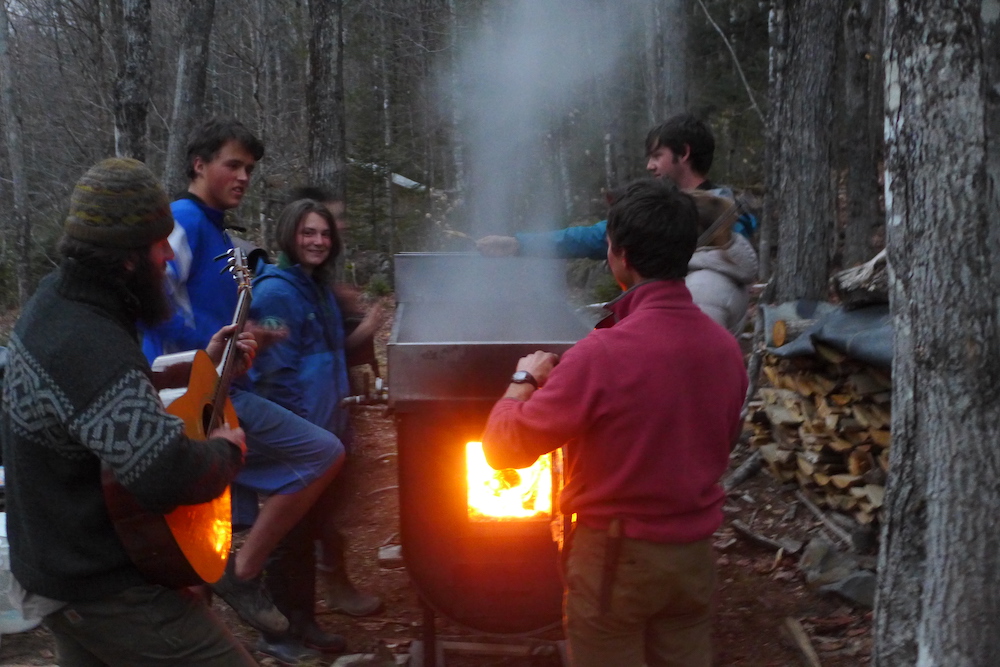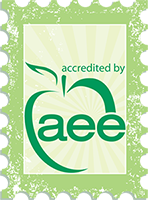2023 Arctic to Atlantic Winter Semester Blog #6
Greetings from Winter Semester! Spring has sprung and so too have we sprung into life at Maine Local Living School (MLLS), where we’ve been staying for the past couple of weeks. Under the tutelage of Chris Knapp, we have been hard at work caring for the homestead here, learning about nature in the springtime, and making the paddles and packbaskets we will need for traveling on the river in two short weeks!
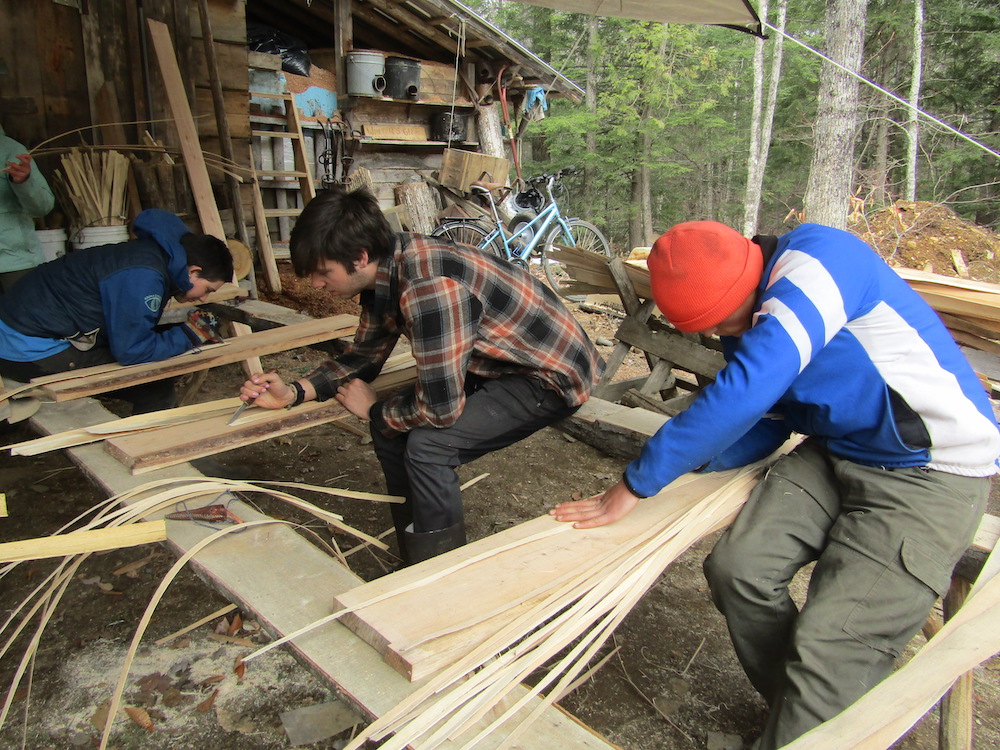 Each of us has had the chance to reflect upon parts of our experience thus far:
Each of us has had the chance to reflect upon parts of our experience thus far:
Homestead Activities – By Laura
Since arriving at MLLS, we’ve been involved with helping to keep the homestead running. There are a variety of systems that allow the Knapp family to live primarily off their land; while chores are ever-changing with the season, here are a few that have become a part of daily life:
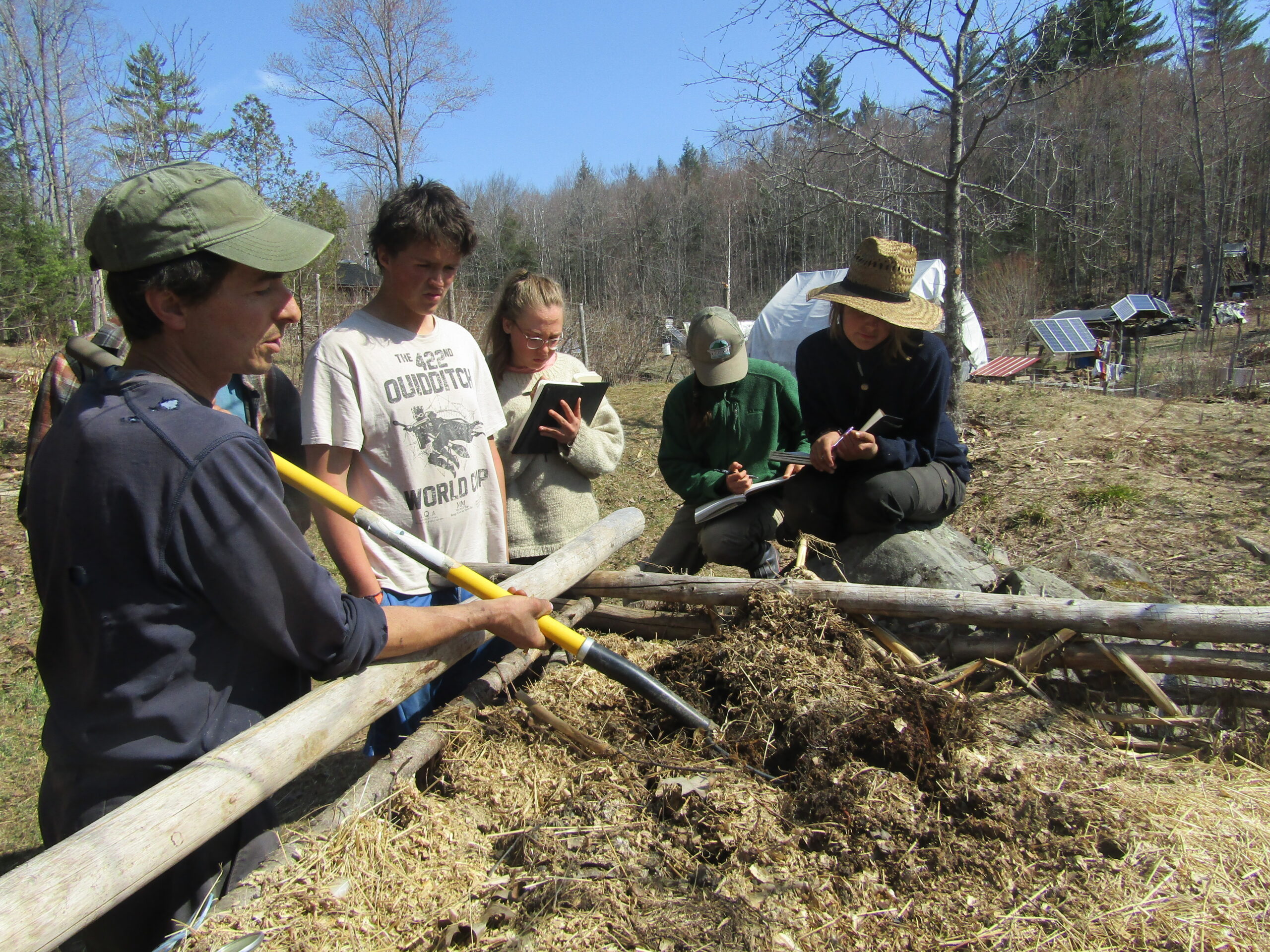 Managing Compost: All human waste and kitchen scraps are delivered to the compost pile where they’re covered with carbon-rich materials, like hay, and left to decompose. If the same amount of carbon-rich cover material and scraps are added, the cover will insulate odors and keep out flies. The compost pile then undergoes a thermophilic reaction wherein the microbes in the compost produce heat up to 150 degrees, killing any pathogens that would be harmful to humans. After a year and its’ ready to be used in gardens!
Managing Compost: All human waste and kitchen scraps are delivered to the compost pile where they’re covered with carbon-rich materials, like hay, and left to decompose. If the same amount of carbon-rich cover material and scraps are added, the cover will insulate odors and keep out flies. The compost pile then undergoes a thermophilic reaction wherein the microbes in the compost produce heat up to 150 degrees, killing any pathogens that would be harmful to humans. After a year and its’ ready to be used in gardens!
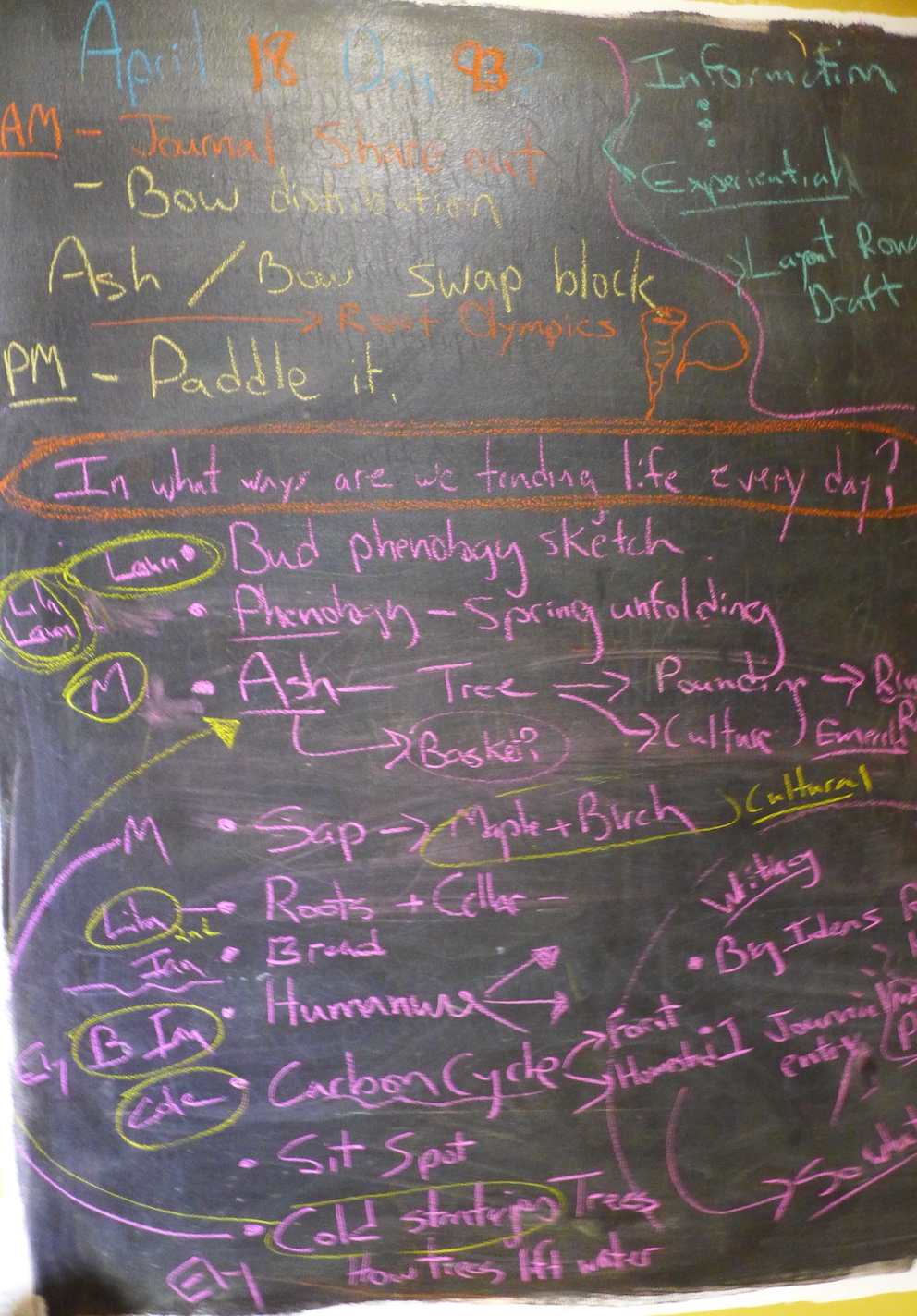 Composting is one of the best ways that we can participate in the carbon cycle. As carbon is added to the atmosphere through living things exhaling, decomposition and combustion, compost allows excess carbon to be returned to the soil, nurturing young plants that rapidly photosynthesize and pull even more carbon from the air as they grow.
Composting is one of the best ways that we can participate in the carbon cycle. As carbon is added to the atmosphere through living things exhaling, decomposition and combustion, compost allows excess carbon to be returned to the soil, nurturing young plants that rapidly photosynthesize and pull even more carbon from the air as they grow.
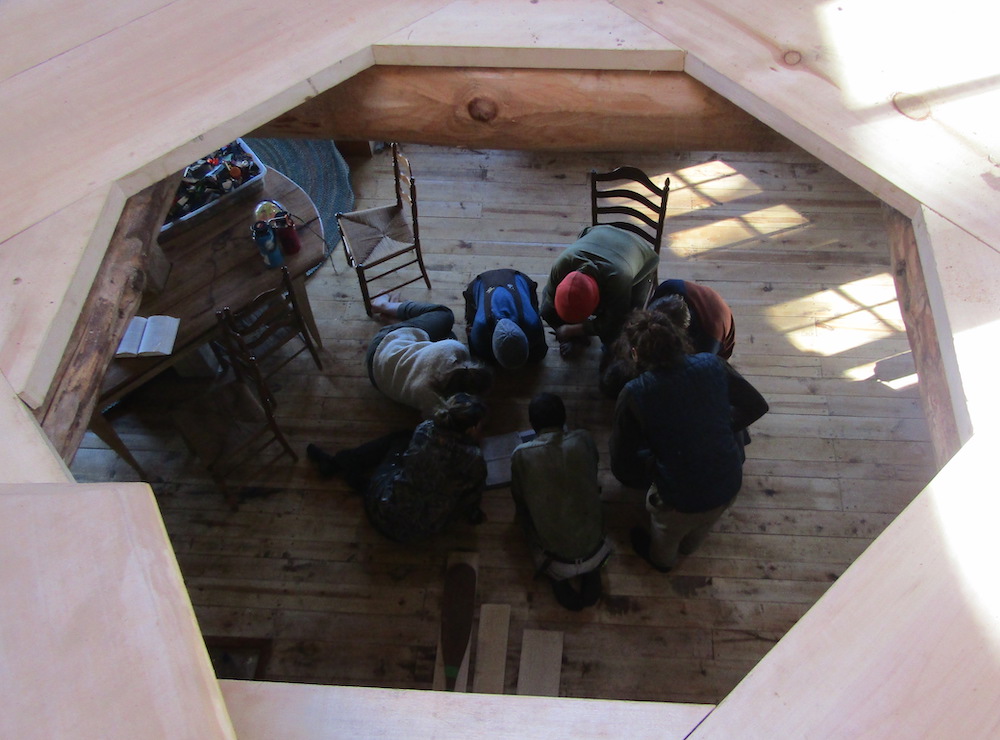 Root Cellaring: While there is a refrigerator at MLLS, it’s not powered by electricity; instead, it is powered by a frequently refilled tub of snow or ice from the ice house. The main food storage area is the root cellar, a hobbit-hole looking structure built into a hill. Fresh root vegetables and apples, harvested in fall, are preserved through the winter in the cold and dark. It’s not uncommon to see the cook of the week dashing to check on our cheese and butter supply tucked safely inside the little hill.
Root Cellaring: While there is a refrigerator at MLLS, it’s not powered by electricity; instead, it is powered by a frequently refilled tub of snow or ice from the ice house. The main food storage area is the root cellar, a hobbit-hole looking structure built into a hill. Fresh root vegetables and apples, harvested in fall, are preserved through the winter in the cold and dark. It’s not uncommon to see the cook of the week dashing to check on our cheese and butter supply tucked safely inside the little hill.
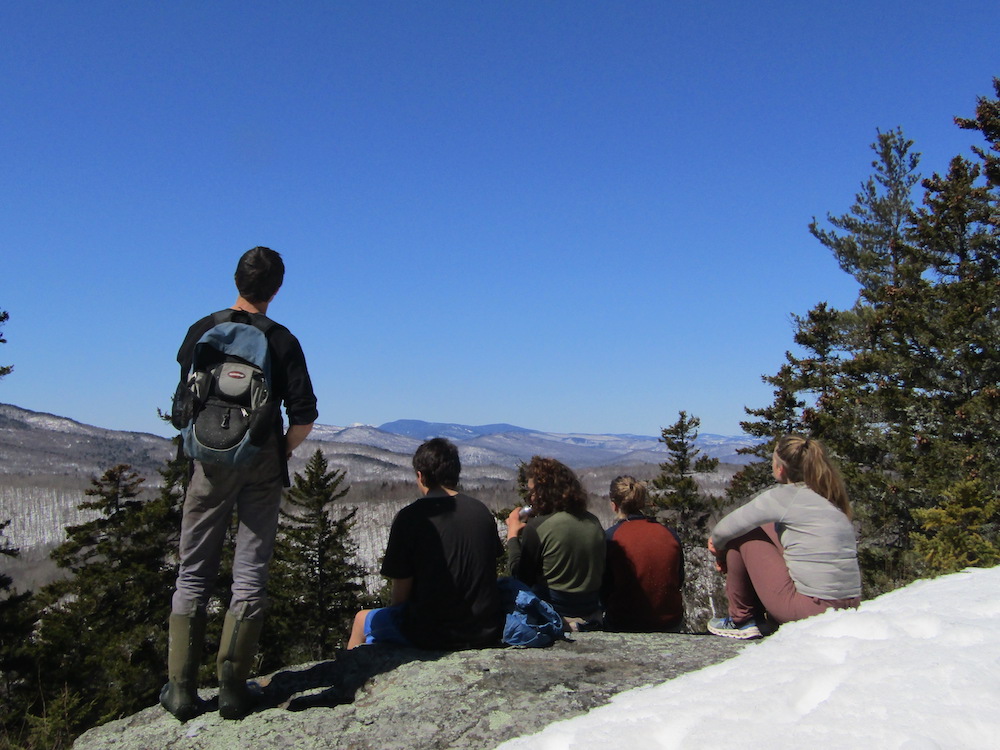 Parsnip Harvesting: Before the rest of the garden has begun to green, the parsnips, having wintered over in the cold ground, need to be dug. This was done in the first warm spring rain of the year; the resulting wheelbarrow full of parsnips was then washed and transferred to the root cellar.
Parsnip Harvesting: Before the rest of the garden has begun to green, the parsnips, having wintered over in the cold ground, need to be dug. This was done in the first warm spring rain of the year; the resulting wheelbarrow full of parsnips was then washed and transferred to the root cellar.
Bean Threshing: Another gift of food comes from the edamame, black, and kidney beans that were harvested here last fall. After spending a season drying, they were ready to be threshed. This involved laying the whole bundle out on a tarp and whacking it with a stick to separate the stalks and beans. The beans and chaff remaining were then poured back and forth between two bins while two people fanned the chaff away.
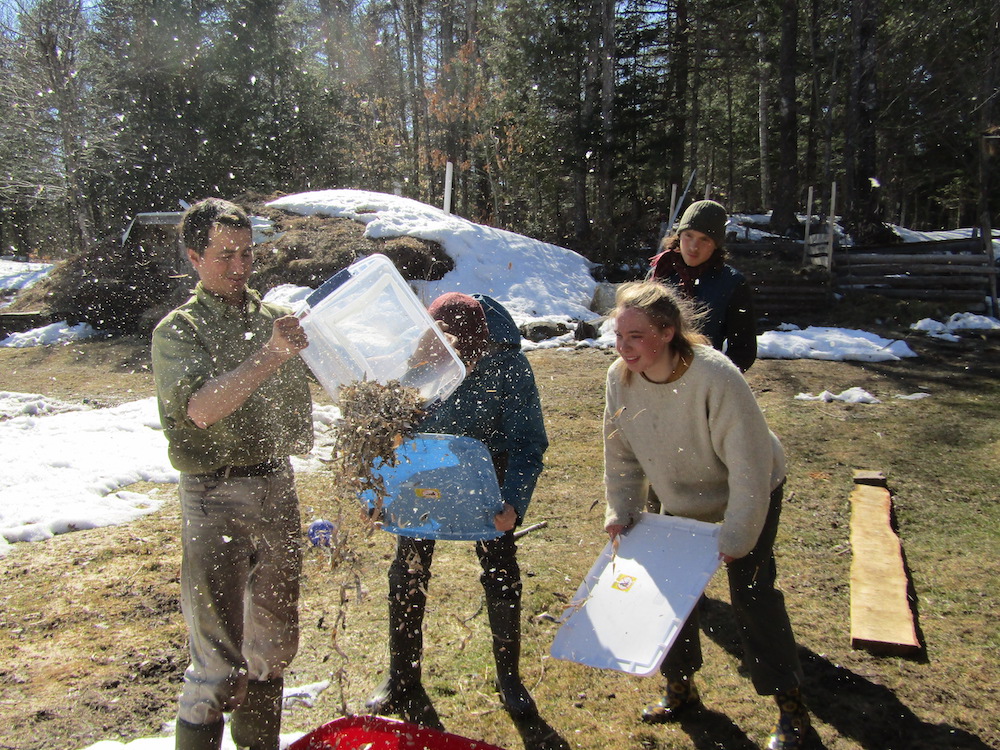 Barn: The animal inhabitants of MLLS are also a part of our community: Six ducks, two geese, a nanny goat and her kid. Barn chores included feeding, stall mucking, egg collecting, and releasing the duck horde upon the homestead every morning. Bertram, the gander, is often protective and hissy but always backs off whenever someone squawks back.
Barn: The animal inhabitants of MLLS are also a part of our community: Six ducks, two geese, a nanny goat and her kid. Barn chores included feeding, stall mucking, egg collecting, and releasing the duck horde upon the homestead every morning. Bertram, the gander, is often protective and hissy but always backs off whenever someone squawks back.
Deer Butchering: Chris found a deer that had been killed by a car and brought the legs and head back home. In order to cook and store it, the skin needed to be removed, meat separated from bone, and cut to size. Some of us had a gruesome fascination with the bones while others wrinkled their noses at the whole affair. In the end, we were very lucky to have several days worth of stew and stir fry… and a few vertebrae for craft projects.
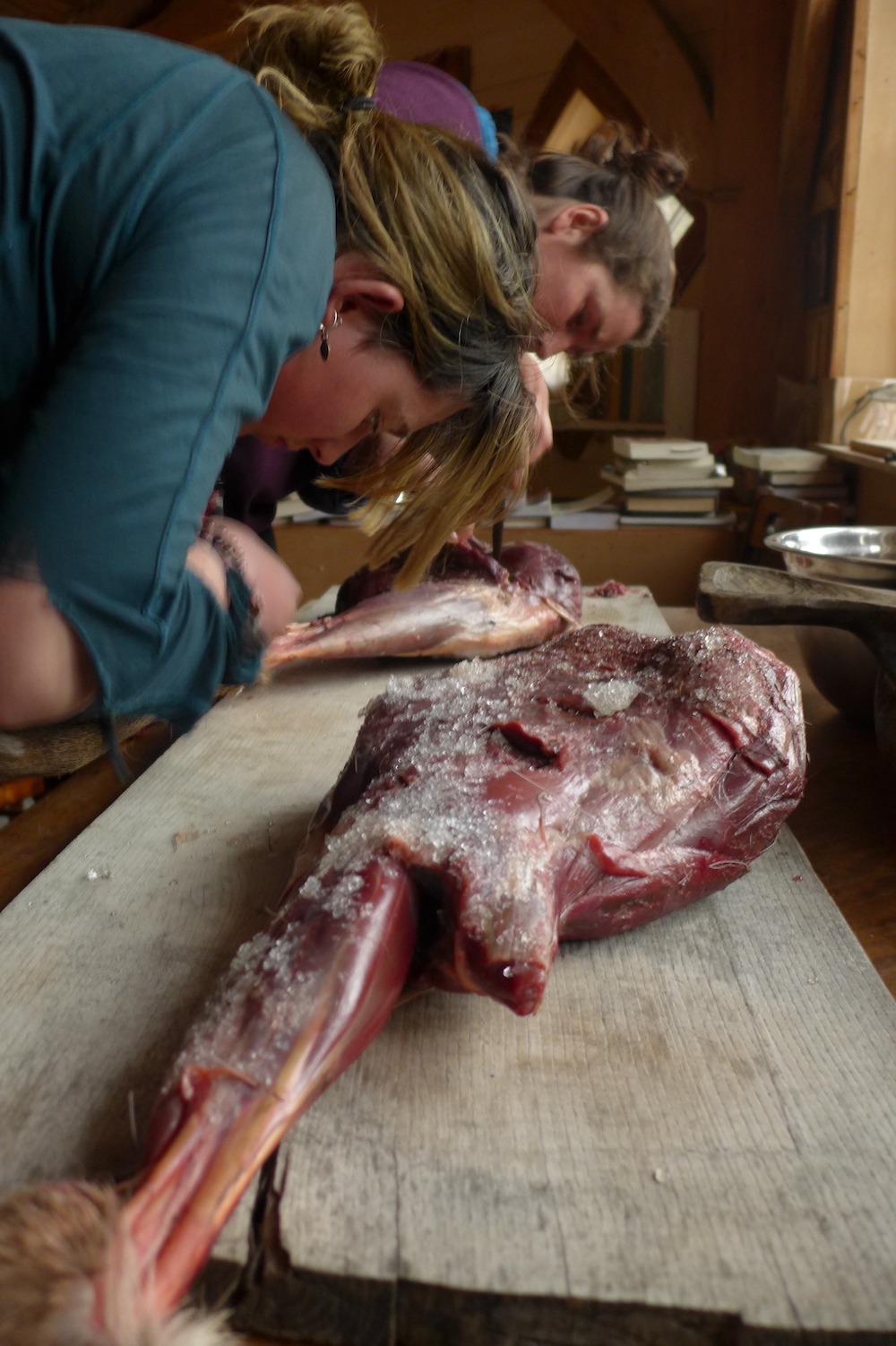 That’s just a small sample of the work on the homestead!
That’s just a small sample of the work on the homestead!
Handwork – By Matias
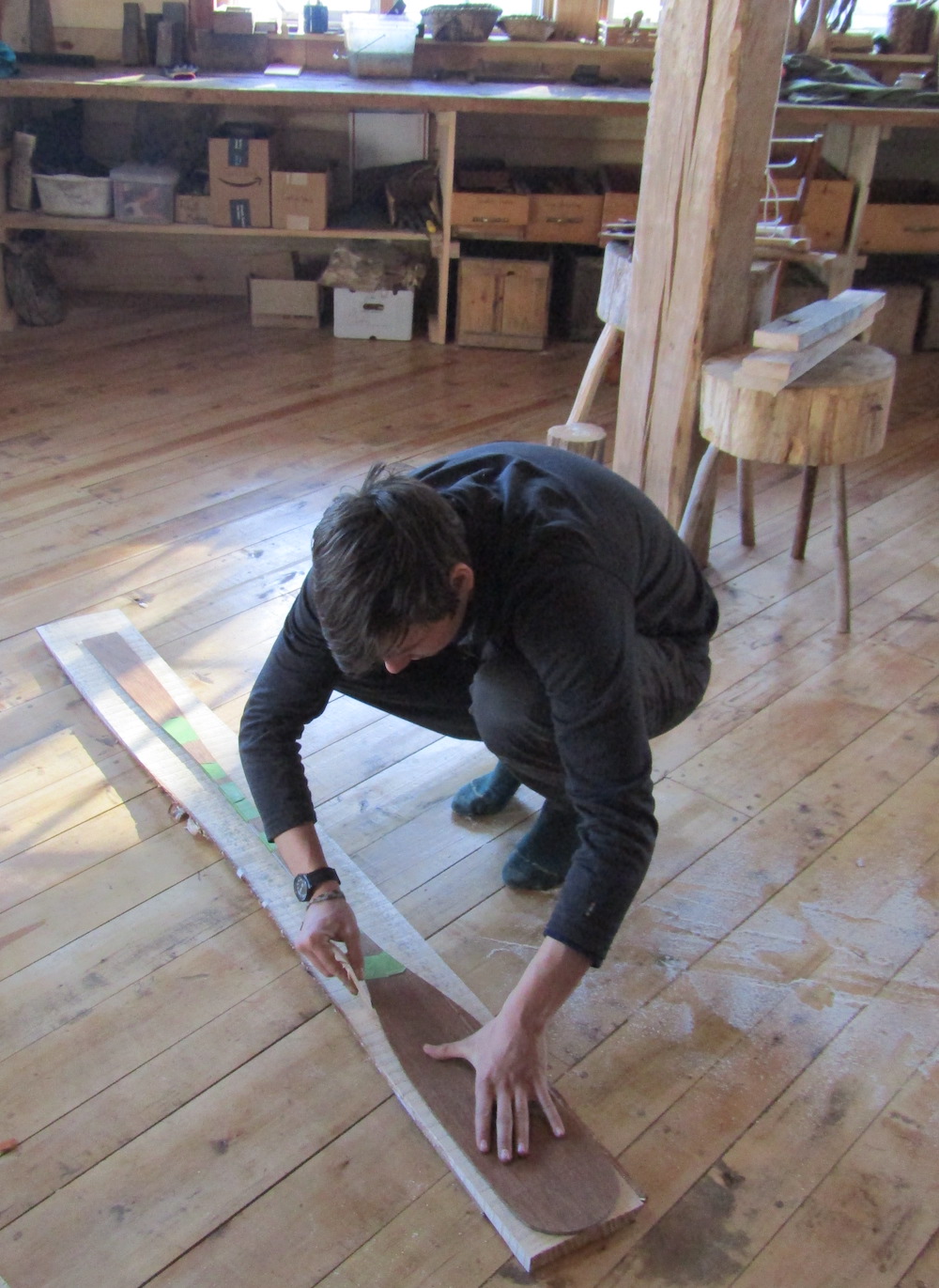 At MLLS, we are surrounded by all kinds of amazing handcrafts, and we even get to make some of our own! Our main projects have been making the paddles and packbaskets to take on the upcoming river and ocean legs of our expedition. Besides these, though, we have spent time developing our craft skills and working on many other smaller handcraft projects.
At MLLS, we are surrounded by all kinds of amazing handcrafts, and we even get to make some of our own! Our main projects have been making the paddles and packbaskets to take on the upcoming river and ocean legs of our expedition. Besides these, though, we have spent time developing our craft skills and working on many other smaller handcraft projects.
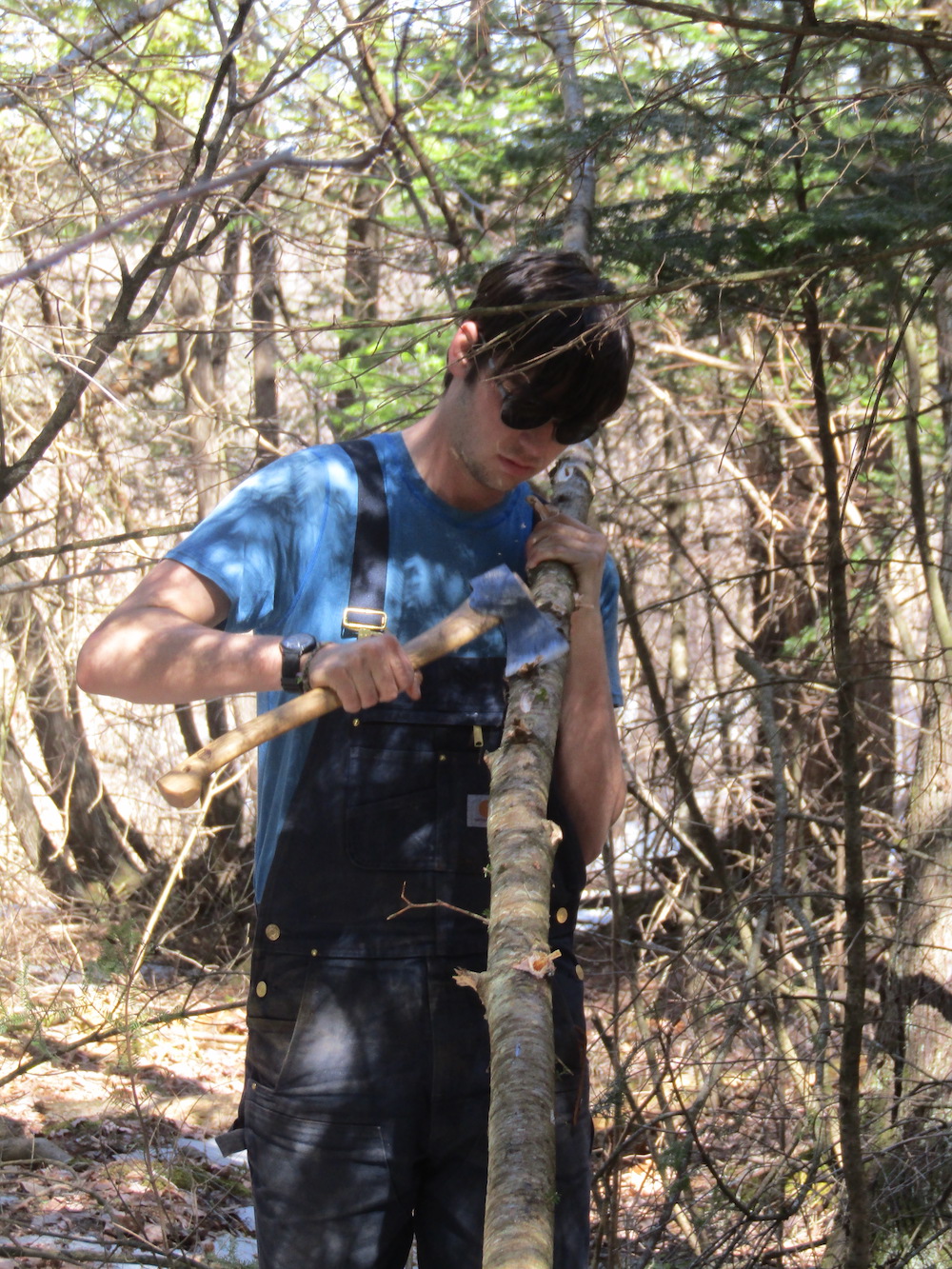 For example, the first step in carving a paddle is to have sharp tools; hence, we spent a day turning our trail-beaten forestry axes into razor-sharp implements of carving. Now that we had the means to carve, we traced an outline of a paddle onto dry birch boards, and, after using a bow saw to make relief cuts, we axed out the rough shape of our paddles.
For example, the first step in carving a paddle is to have sharp tools; hence, we spent a day turning our trail-beaten forestry axes into razor-sharp implements of carving. Now that we had the means to carve, we traced an outline of a paddle onto dry birch boards, and, after using a bow saw to make relief cuts, we axed out the rough shape of our paddles.
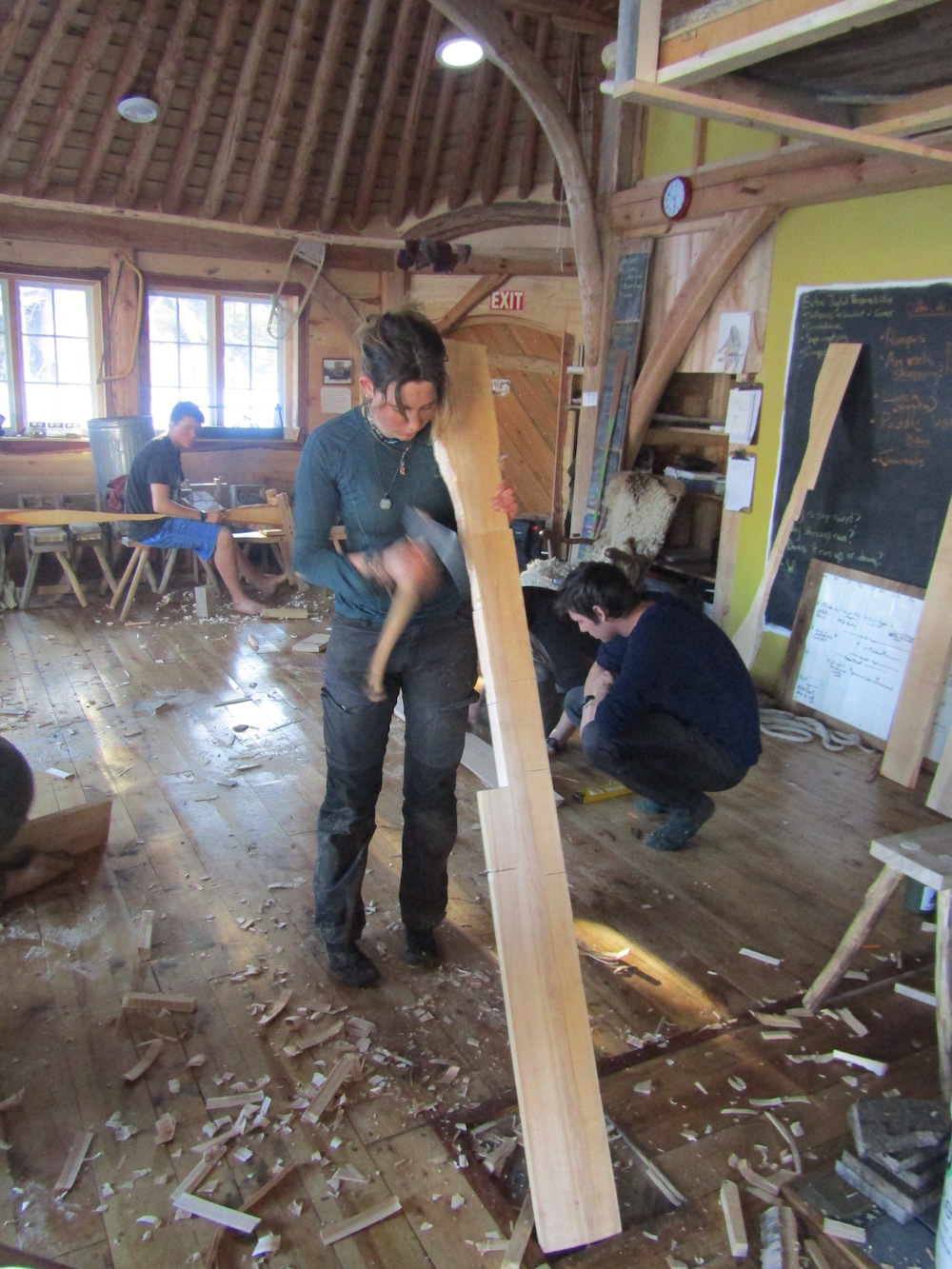 At this time we were introduced to a whole new set of tools: the shave horse and drawknife. These let us quickly remove material to create the different thicknesses and elegant curves of a wooden paddle.
At this time we were introduced to a whole new set of tools: the shave horse and drawknife. These let us quickly remove material to create the different thicknesses and elegant curves of a wooden paddle.
 Our second large project at MLLS has been our pack baskets. We started by learning about why brown ash is used for making baskets: ash trees form large tubes between growth rings that allow these growth rings to separate when pounded with a hammer. By scoring and stripping these rings, you are left with long, thin, straight material to weave into a basket.
Our second large project at MLLS has been our pack baskets. We started by learning about why brown ash is used for making baskets: ash trees form large tubes between growth rings that allow these growth rings to separate when pounded with a hammer. By scoring and stripping these rings, you are left with long, thin, straight material to weave into a basket.
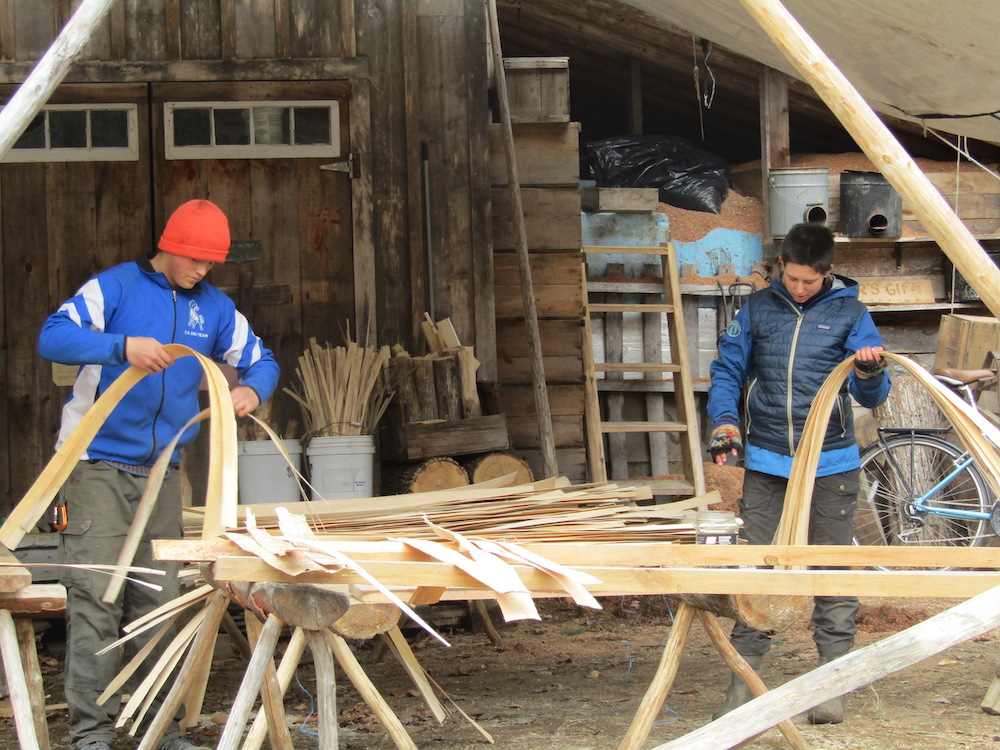 We haven’t finished either of these projects at this time, but we will be sure to let you know how they turned out in the next blog!
We haven’t finished either of these projects at this time, but we will be sure to let you know how they turned out in the next blog!
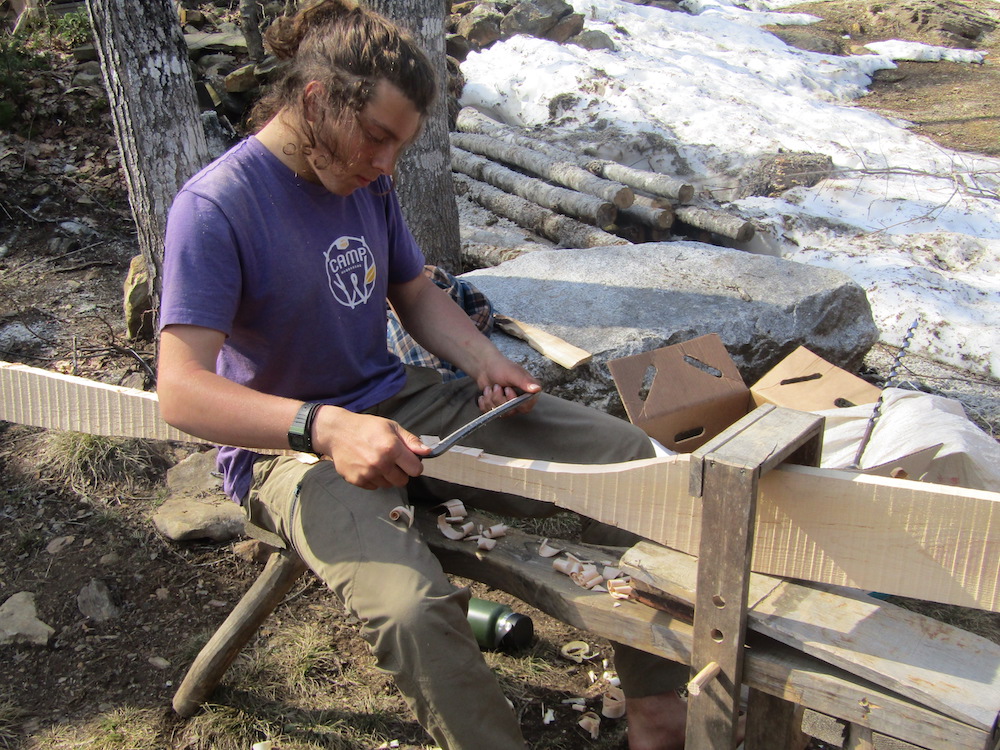
Grandfather Ray – By Laura
Amongst the many folks we’ve met during our time here, our encounter with Grandfather Ray stands out. We were lucky enough to be introduced on a clear April morning; a short, soft-eyed older gentleman in a baseball cap, plaid shirt and jeans met us by the side of his blueberry patch. One eye seemed smaller than the other, so he always seemed to be amused by something. We began by cutting some fir poles for him. His explanation of how we were to do it began with, “First of all, don’t believe nuthin’ I tell yuh. You gotta figure it out for yourself.”
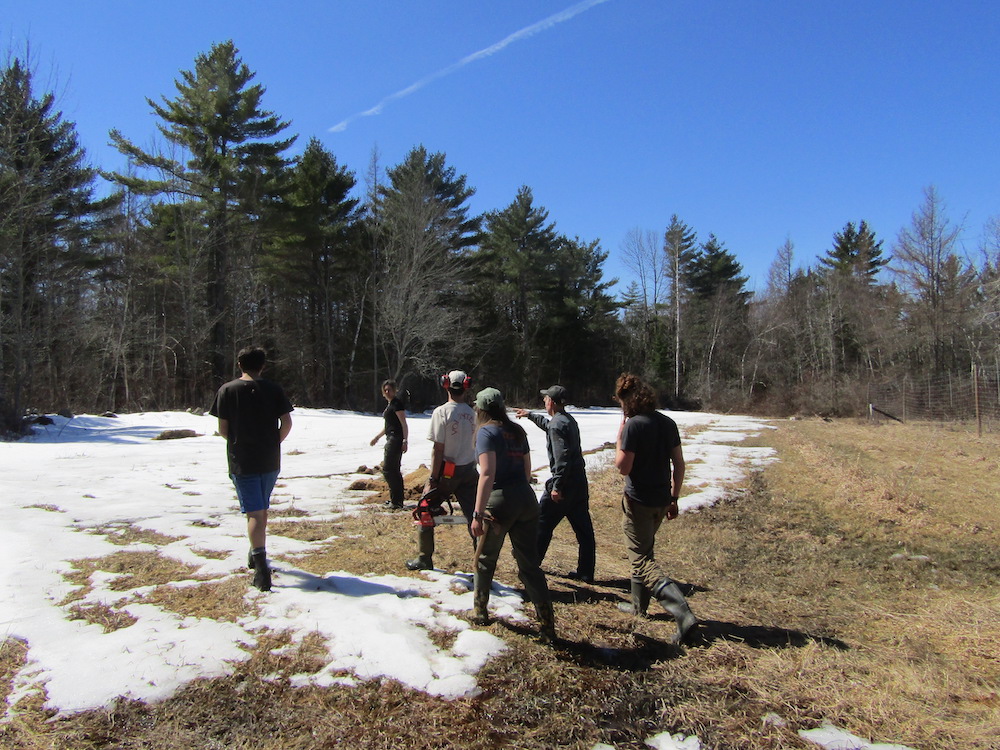 Afterwards, he sat with us by a trickling stream for lunch and told us stories; what his land had looked like when he began building earth lodges there and listening for a leaf to hit the water.
Afterwards, he sat with us by a trickling stream for lunch and told us stories; what his land had looked like when he began building earth lodges there and listening for a leaf to hit the water.
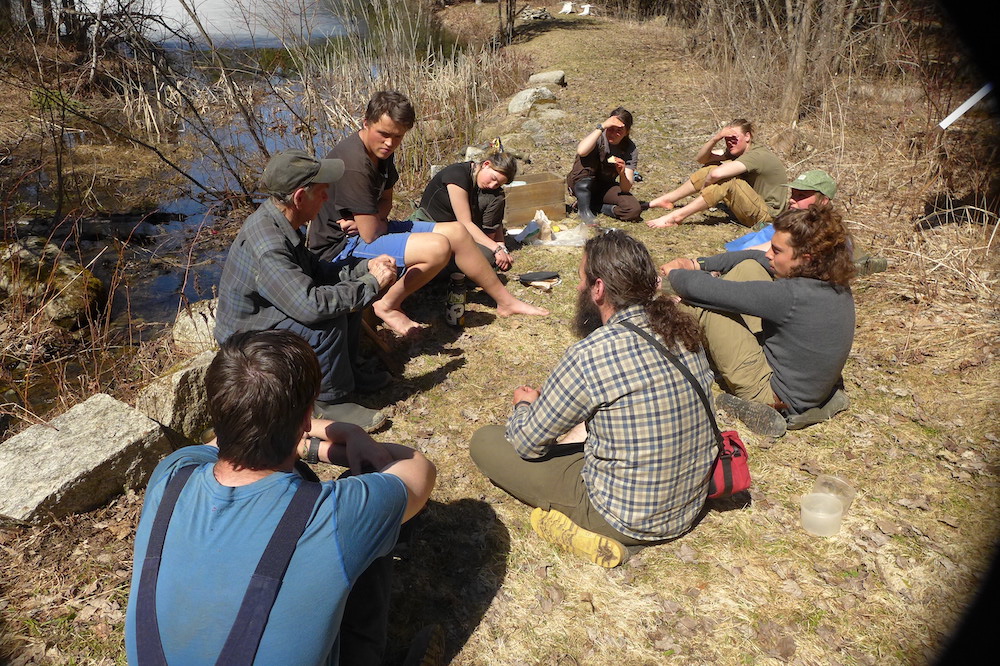 One thing he mentioned many times was this: “You have to make mistakes before you can do something perfect.” The industrial world, he told us, doesn’t understand cause and effect. We take what we want and consider the repercussions afterwards. Ray spoke about permission and the conversation between us and nature. “Because it’s not ‘your’ place, it’s about respect… sometimes you can say thank you and leave a gift, and sometimes you can just say thank you, and that’s ok too.”
One thing he mentioned many times was this: “You have to make mistakes before you can do something perfect.” The industrial world, he told us, doesn’t understand cause and effect. We take what we want and consider the repercussions afterwards. Ray spoke about permission and the conversation between us and nature. “Because it’s not ‘your’ place, it’s about respect… sometimes you can say thank you and leave a gift, and sometimes you can just say thank you, and that’s ok too.”
 If caring for the black locust and white pine are engaging in conversation, then Ray is exchanging poetry with the woods. The land had once been dairy pasture, but with the cows long since gone, gray birch and black locust began to shoot up around the edges. Inside the forest, brown and white ash, sugar maple, and poplar rose and fell in different clusters. Everywhere there were stumps of various ages and sizes, but the ground around teemed with mature, healthy trees and their saplings. It seemed a place carefully loved as it changed, on its own or with a human hand.
If caring for the black locust and white pine are engaging in conversation, then Ray is exchanging poetry with the woods. The land had once been dairy pasture, but with the cows long since gone, gray birch and black locust began to shoot up around the edges. Inside the forest, brown and white ash, sugar maple, and poplar rose and fell in different clusters. Everywhere there were stumps of various ages and sizes, but the ground around teemed with mature, healthy trees and their saplings. It seemed a place carefully loved as it changed, on its own or with a human hand.
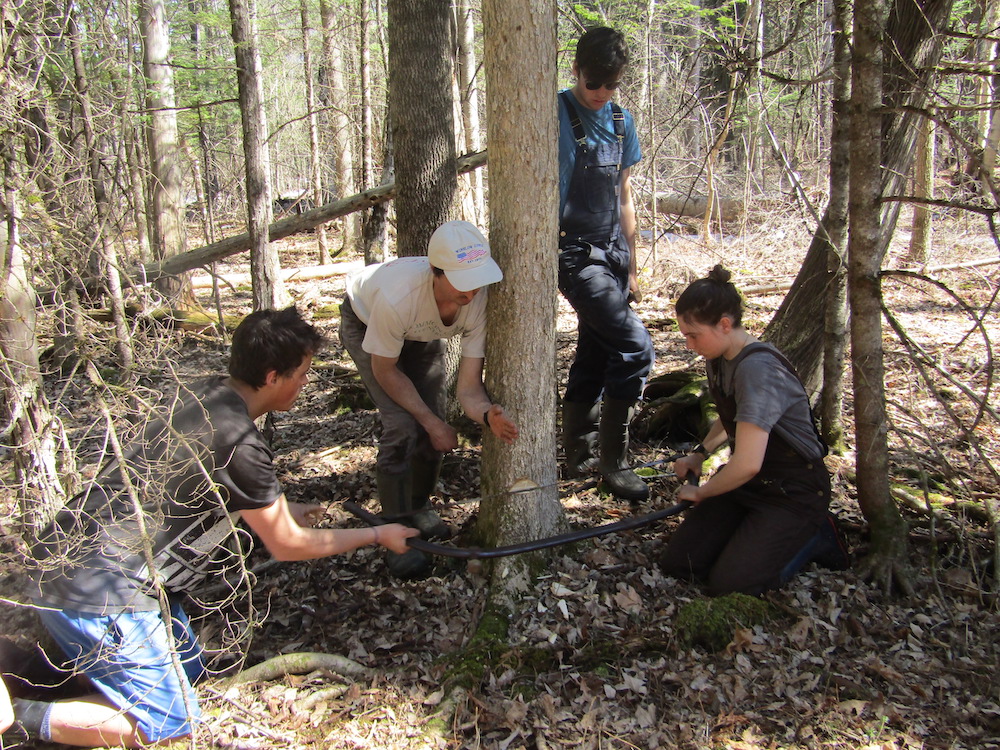 Besides meeting and doing service for Ray, we were also there to choose a brown ash that would become our pack baskets. In order for the growth rings to be the right size, we would need to fell a healthy tree with a crown not too large. When at last the perfect ash was selected, we placed our hands on the trunk and said a silent, “Thank you.”
Besides meeting and doing service for Ray, we were also there to choose a brown ash that would become our pack baskets. In order for the growth rings to be the right size, we would need to fell a healthy tree with a crown not too large. When at last the perfect ash was selected, we placed our hands on the trunk and said a silent, “Thank you.”
It was a special moment. It felt almost sacrificial to take such a perfect, healthy giant out of the woods, and yet, like Ray, Robin Wall Kimmerer, and our own Cole have all pointed out, there is no way to not leave an impact on our world. We’re responsible for ensuring it’s a good one.
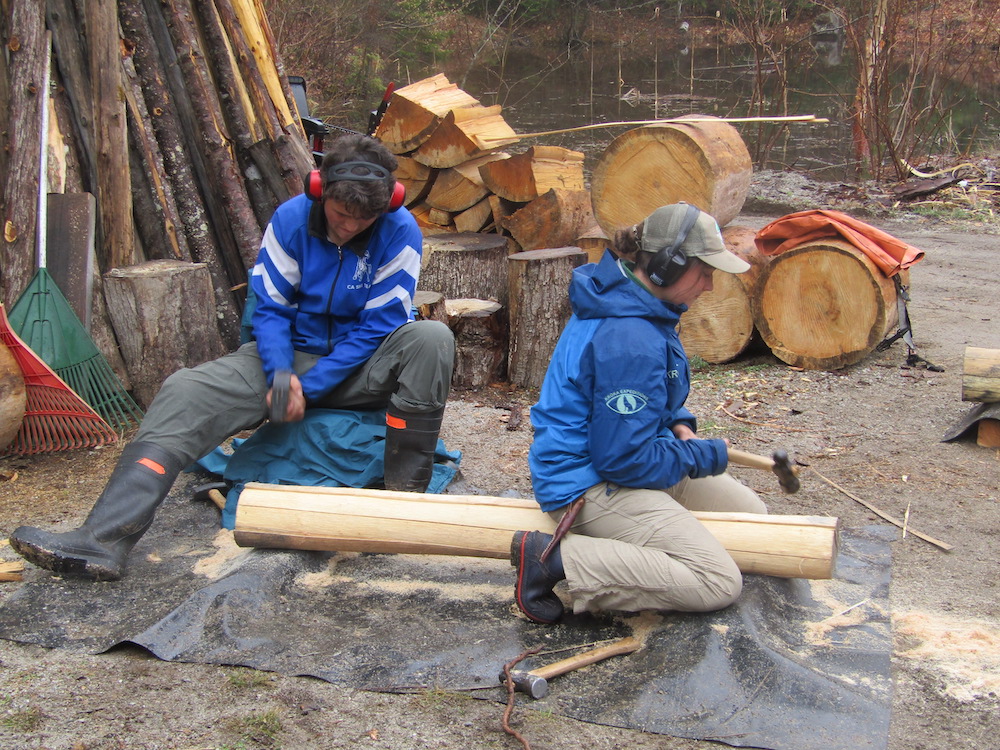
Root Veggies – By Ian
Here at MLLS, we have been living with the Knapp family. They have been so kind to share with us food that they have put their time and energy into growing and storing in their root cellar. With a plethora of vegetables, this, for some, has created the predicament of quickly learning what root veggies are what and how to use said veggies for weeks worth of meals with enough variety to keep it interesting. As the food manager, this is an unfortunately steep learning curve, as far as I can tell.
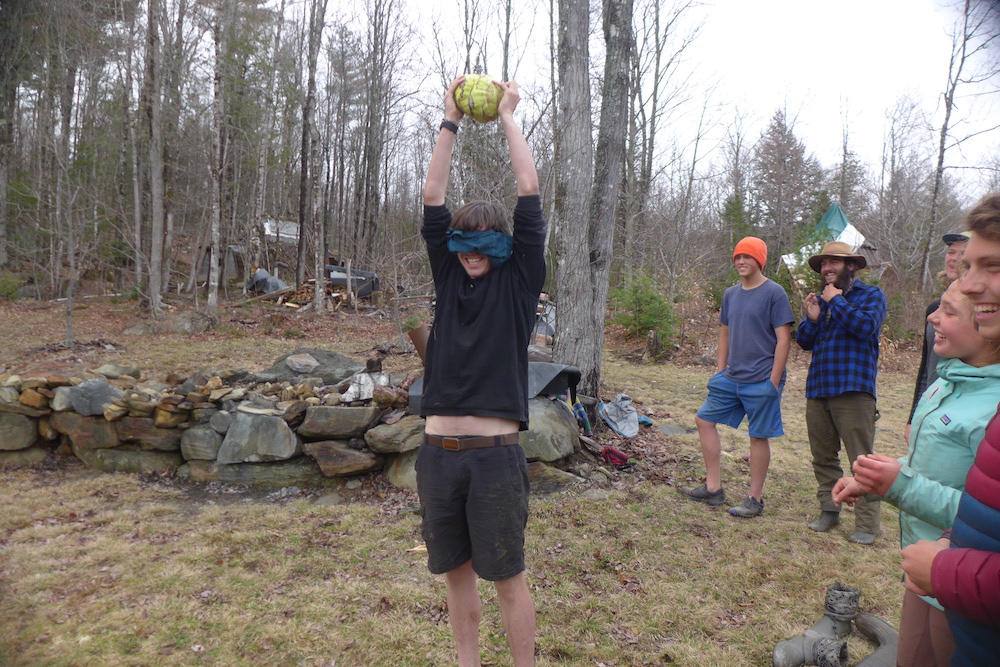 This is “The Root Vegetable Conundrum:”
This is “The Root Vegetable Conundrum:”
Carrots are supposed to be simple: they are wrinkled, root-looking, and come in three colors: orange, purple, and white. Parsnips are white: they, for the most part, look like giant carrots. Beets are purpleish-reddish balls with a stem hat. Daikon radishes come in white and purple; they look like smooth carrots, or tiny smooth parsnips, or possibly a long beet. Potatoes are just tan balls; no one struggles with them much. Rutabagas look like a beet in shape but are potato-colored. Cabbages are the only leafy veggie in the root cellar. Kohlrabi is a giant green alien head, and when in a dark room can get confused with a cabbage. Recently, we tapped into watermelon radishes, which can only be explained as rainbow-colored long beets.
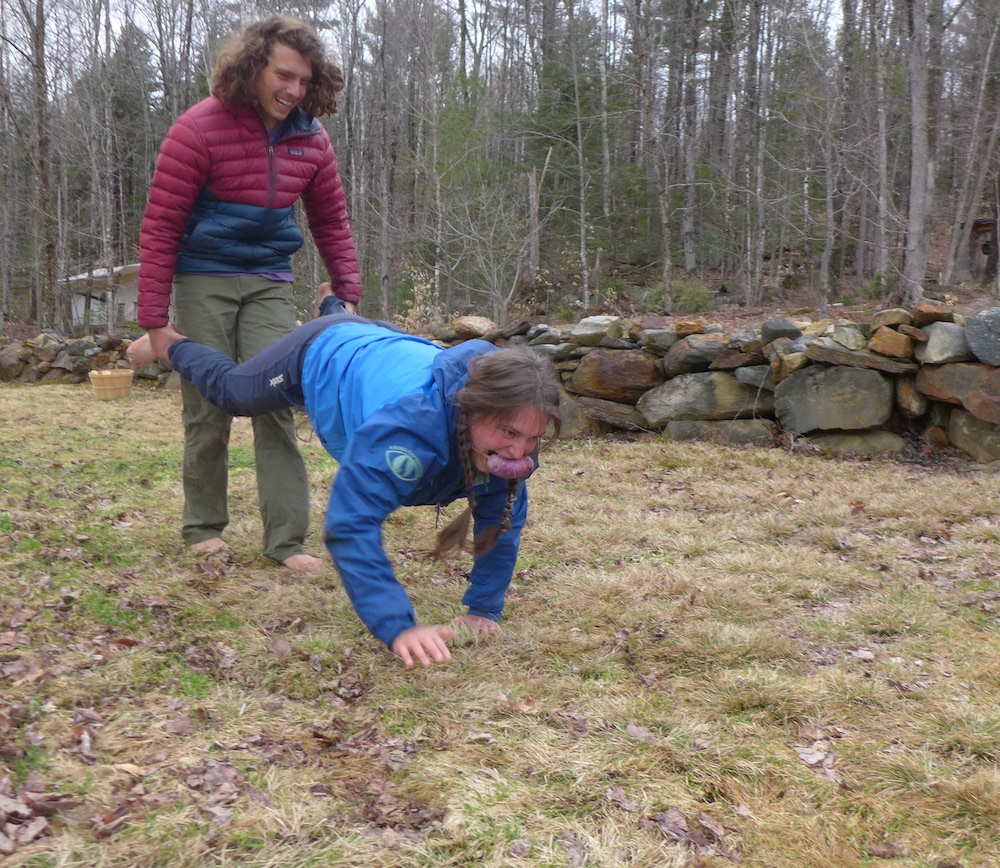 With these vegetables we have four main meal paths to follow: We can boil up a pot of soup, adding lentils, split peas, chickpeas, or beans to our vegetable ensemble. This is easy with little need to watch but requires time to cook. If this doesn’t sound appealing or you need just a side, we can grate or slice up some veggies and create a salad; these are usually cabbage or kohlrabi-based with some leafy greens from the greenhouse and homemade salad dressing on top to add some freshness. If time permits, we will sautee up everything, add eggs or cheese, and make a stir fry. On special occasions we will make a flour, egg, and water mixture with shredded root vegetables pressed flat and fried in butter to make a delectable veggie patty. Between these four food options and an assortment of grains and, of course, hot sauce, we eat well here.
With these vegetables we have four main meal paths to follow: We can boil up a pot of soup, adding lentils, split peas, chickpeas, or beans to our vegetable ensemble. This is easy with little need to watch but requires time to cook. If this doesn’t sound appealing or you need just a side, we can grate or slice up some veggies and create a salad; these are usually cabbage or kohlrabi-based with some leafy greens from the greenhouse and homemade salad dressing on top to add some freshness. If time permits, we will sautee up everything, add eggs or cheese, and make a stir fry. On special occasions we will make a flour, egg, and water mixture with shredded root vegetables pressed flat and fried in butter to make a delectable veggie patty. Between these four food options and an assortment of grains and, of course, hot sauce, we eat well here.
Kevin Slater – By Bria
We spent two days at Mahoosuc Guide Service doing service work for Kevin and Polly, the owners. During the evening Kevin shared a presentation about their expeditions in Eeyou-Istchee (the Cree name for Quebec) with the native people from these areas. Their expeditions were really interesting to learn about, and looking at the similarities and differences between our time in Uapishka and their time further north was fun. Near the end of the presentation, Kevin told us a really amazing story: In the mid 1900’s, the Canadian government, in an attempt to assimilate Cree and Inuit people to western civilization by destroying their traditional way of life, went to their villages and shot their sled dogs. When Kevin and Polly heard this story, they were met with deep sadness, especially since they have sled dogs themselves. They had an idea though.
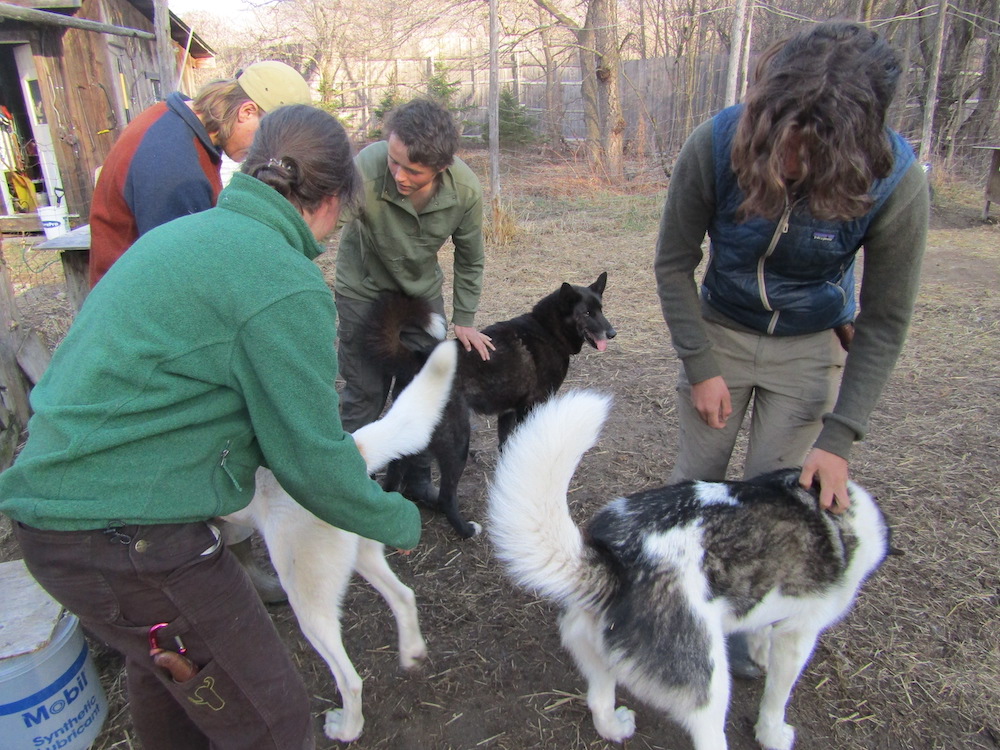 They knew of some folks in Antarctica who had the same breed of dog that the natives had had. They contacted them and, through some funky logistics, were able to fly the dogs up to Boston, drive them to Eeyou-Istchee, and then “mush” them 700 miles to the villages who originally had them. The indigenous people were reunited with the dogs that had been foundational to their culture for hundreds of years and, in the present, these traditional dog teams can be found in thirteen villages of northern Eeyou-Istchee. It was truly an amazing story to hear. It made me think about how we always feel like one or two people can’t make much change, but Kevin and Polly disproved that. They were able to make a positive impact on so many people’s lives, and they didn’t have a reason to do so other than the fact that they cared about the welfare and culture of the people of Eeyou-Istchee.
They knew of some folks in Antarctica who had the same breed of dog that the natives had had. They contacted them and, through some funky logistics, were able to fly the dogs up to Boston, drive them to Eeyou-Istchee, and then “mush” them 700 miles to the villages who originally had them. The indigenous people were reunited with the dogs that had been foundational to their culture for hundreds of years and, in the present, these traditional dog teams can be found in thirteen villages of northern Eeyou-Istchee. It was truly an amazing story to hear. It made me think about how we always feel like one or two people can’t make much change, but Kevin and Polly disproved that. They were able to make a positive impact on so many people’s lives, and they didn’t have a reason to do so other than the fact that they cared about the welfare and culture of the people of Eeyou-Istchee.
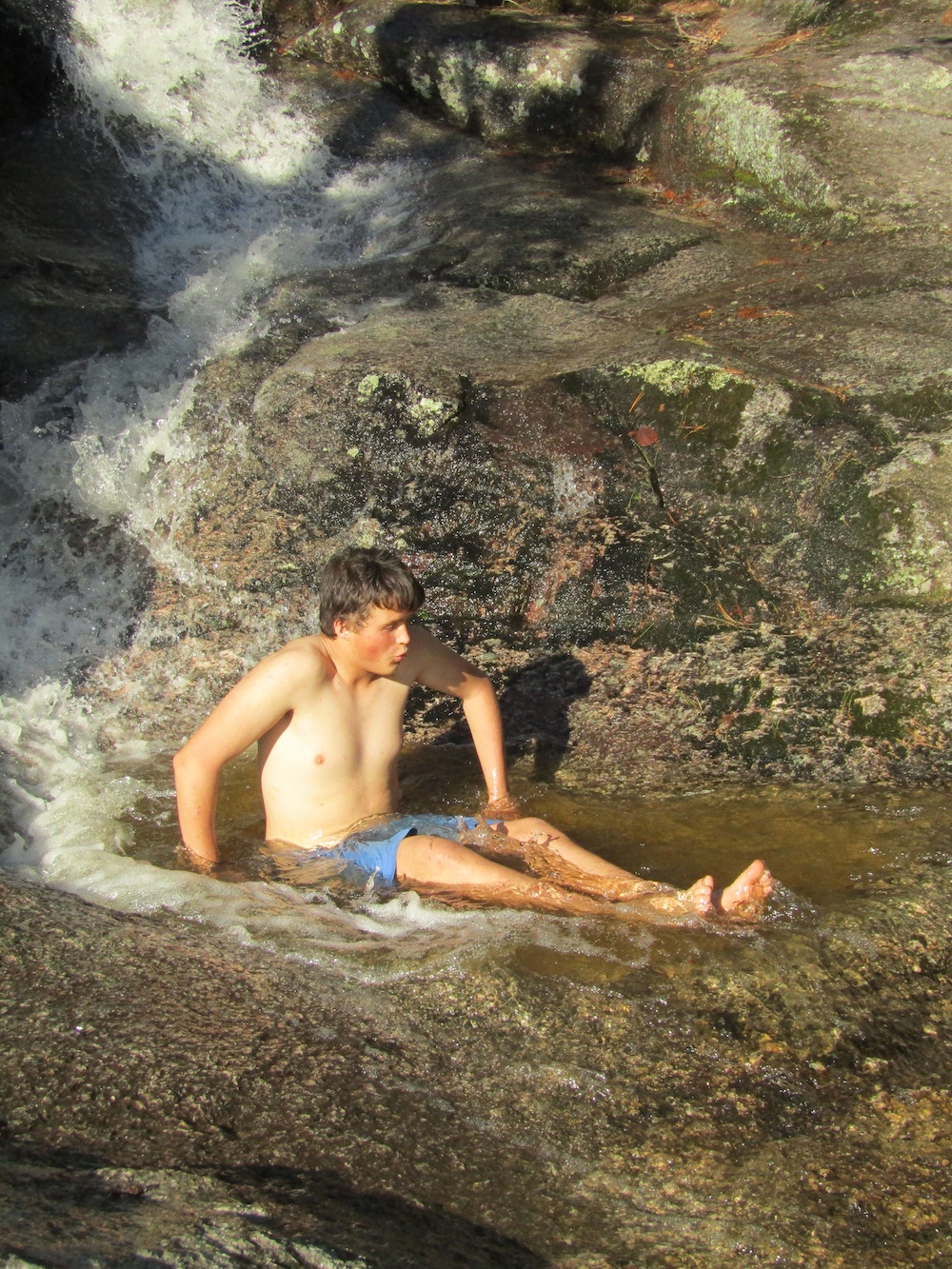
Play – By Cole
During our stay at MLLS, we do a lot of work, be it chores, paddle making, sap boiling, cooking, or ash pounding. Sometimes, though, we need a break. There are a bunch of things that we do to unwind. Sometimes there are foam sword fights that occur.
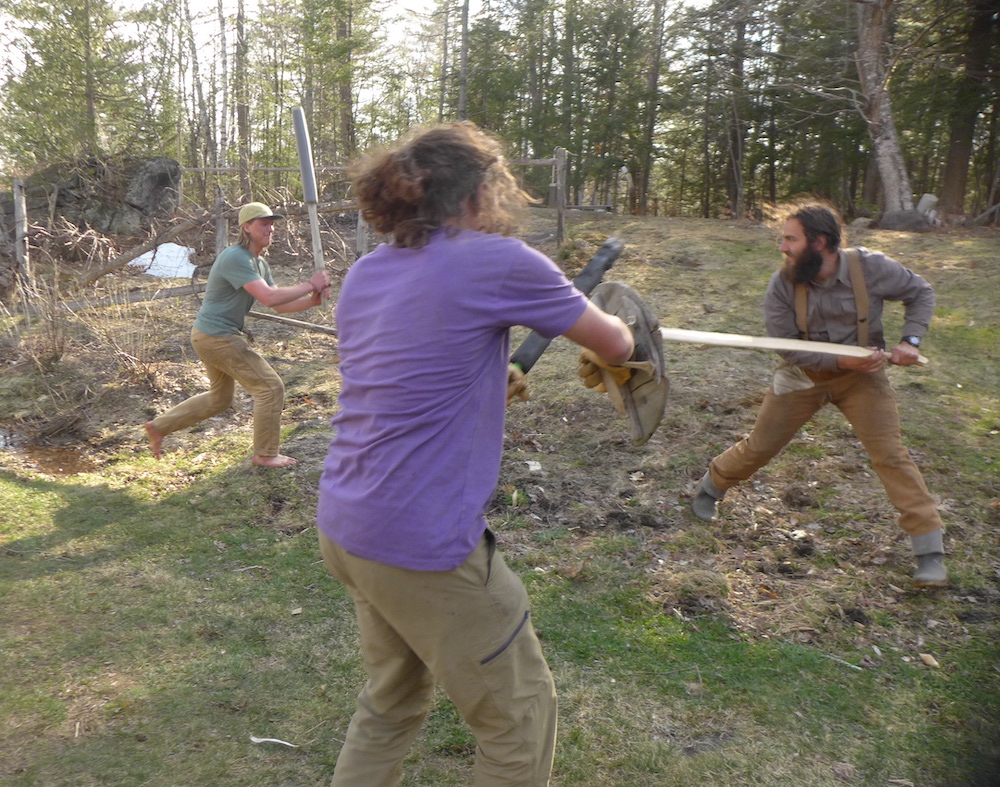 On other occasions, we play on one of Chris’ massive swings. At other times, Nick gives guitar lessons; Bria, Ian, and Lilah are our up-and-coming guitarists.
On other occasions, we play on one of Chris’ massive swings. At other times, Nick gives guitar lessons; Bria, Ian, and Lilah are our up-and-coming guitarists.
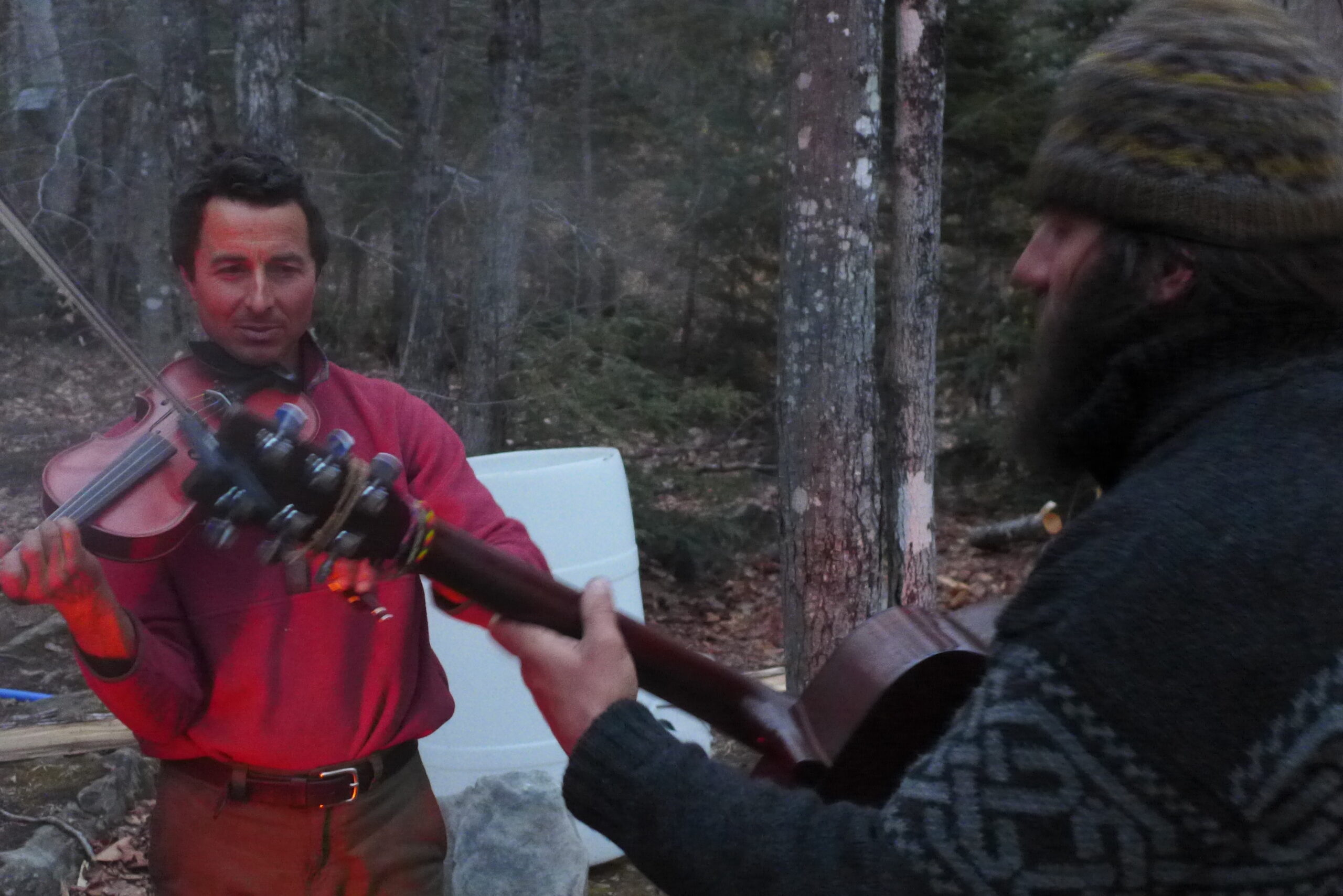 Ely and Matias love to get most of the group in on a game of Dungeons and Dragons. One time, we even had a “root vegetable olympics’ in which we had to get to a basket by some means devised by Chris and come back with a specific vegetable. This is what we get up to in our free time.
Ely and Matias love to get most of the group in on a game of Dungeons and Dragons. One time, we even had a “root vegetable olympics’ in which we had to get to a basket by some means devised by Chris and come back with a specific vegetable. This is what we get up to in our free time.
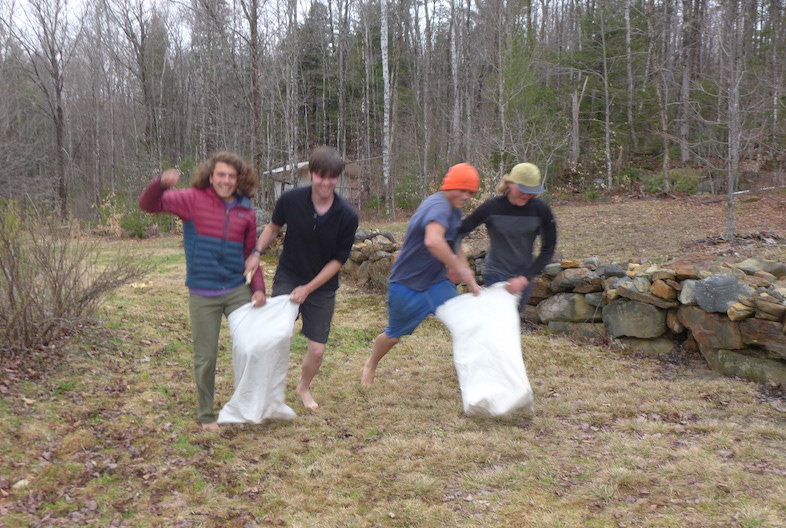
Fitness – By Lilah
Most of our days include some sort of fitness activity, primarily running, biking or anything that will keep us in shape. Doing this everyday has been more crucial than was initially thought, as it soon was discovered that skiing muscles are very different than running and biking muscles.
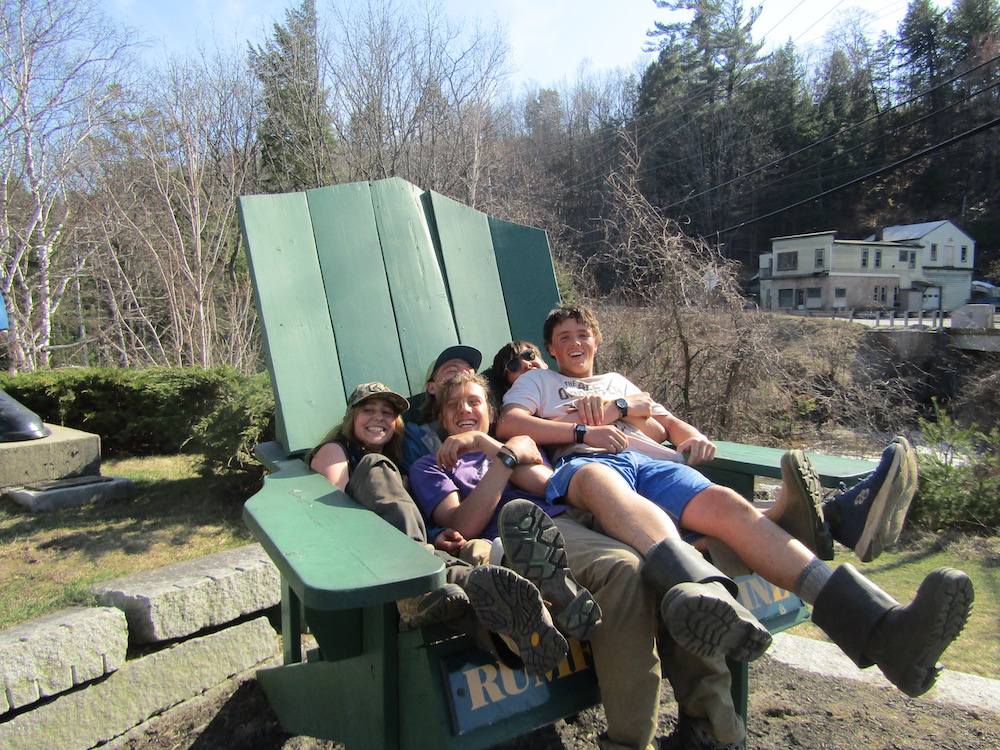 Our running has primarily been around Maine Local Living School and the surrounding land. It’s really beautiful here with new signs of spring popping up every day. Biking, on the other hand, has the potential to take us further, giving us the chance to travel farther afield. On Wednesday, chores and breakfast were abandoned as we biked to the nearby town of Farmington first thing in the morning.
Our running has primarily been around Maine Local Living School and the surrounding land. It’s really beautiful here with new signs of spring popping up every day. Biking, on the other hand, has the potential to take us further, giving us the chance to travel farther afield. On Wednesday, chores and breakfast were abandoned as we biked to the nearby town of Farmington first thing in the morning.
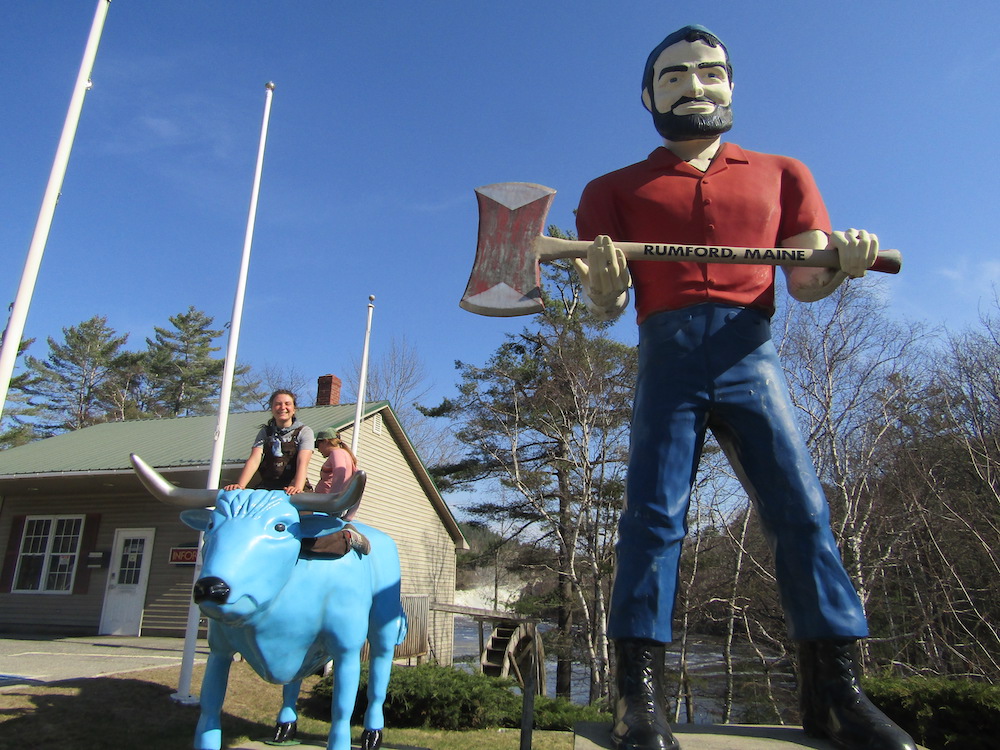 It was only 20 miles round trip, but it felt good to be back with the sliding momentum running lacks. On the way back, we stopped to collect cans (five cents a can; we’re saving up for ice cream!). Chris also showed us this magical graveyard where there were an abundance of cranberries.
It was only 20 miles round trip, but it felt good to be back with the sliding momentum running lacks. On the way back, we stopped to collect cans (five cents a can; we’re saving up for ice cream!). Chris also showed us this magical graveyard where there were an abundance of cranberries.
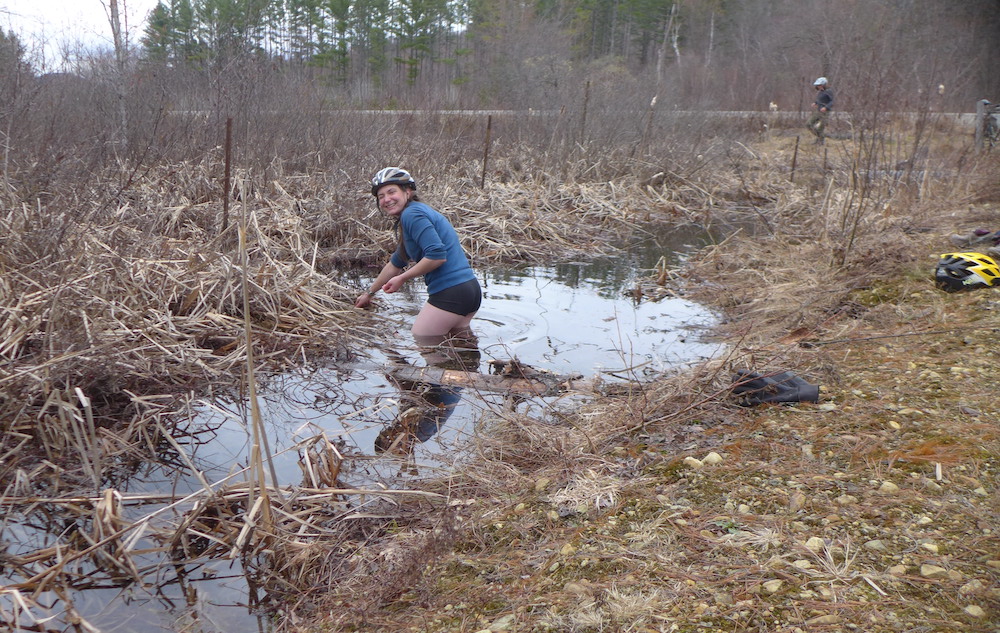
Laura, entranced by the big red berries, waded waist deep in freezing water to retrieve them. On the topic of freezing water, it should be mentioned as well that Chris, in the spirit of “training”, strongly encourages us to swim. Nothing in Canada could have prepared us for the frigid Maine water. Chris also guides us through push ups and core workouts before meals. We will be ready for our upcoming expedition!
Teaching at the Ecology Learning Center – By Bria
On April 12th, we joined Chris in teaching the freshman class from the Ecology Learning Center, a local public charter school. The day started with an opening circle sharing names and something you love about spring, and then we gave a quick presentation about our Semester adventure thus far and what’s coming up for us. After the circle, we split into three groups and had a rotation of stations all related to brown ash. The first was making a mallet out of hornbeam, the hardest wood in the area.
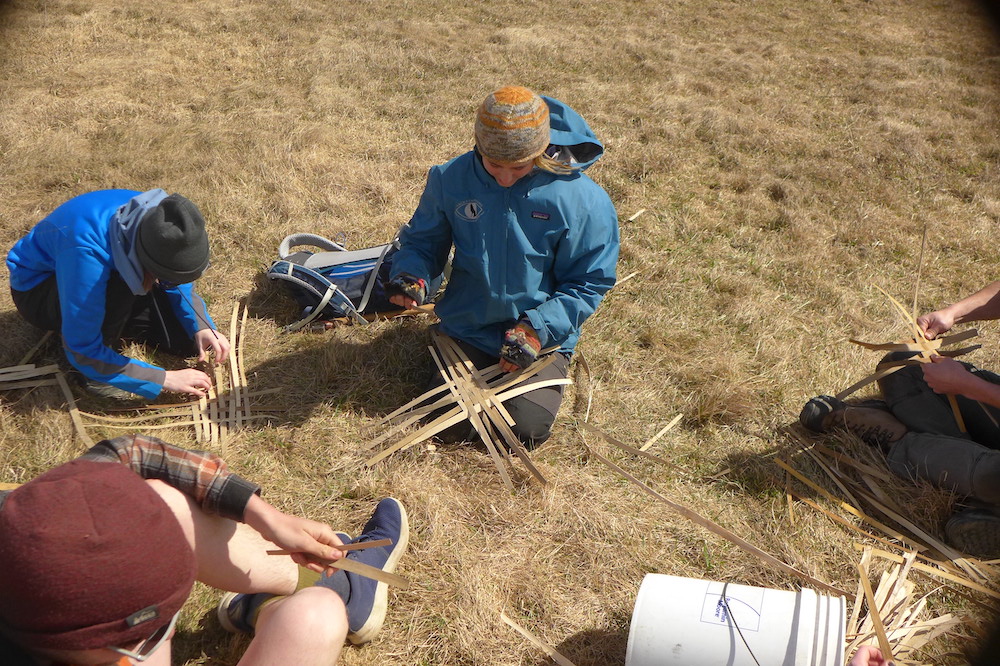 These mallets were then used at the next station where students used them to pound brown ash logs, compressing the wood so that individual growth rings could be peeled off the trunk and used as splints for weaving. The final station was weaving with this material. Here, there were hats, baskets, and flat mats all made of ash. It was fun to see what different people created.
These mallets were then used at the next station where students used them to pound brown ash logs, compressing the wood so that individual growth rings could be peeled off the trunk and used as splints for weaving. The final station was weaving with this material. Here, there were hats, baskets, and flat mats all made of ash. It was fun to see what different people created.
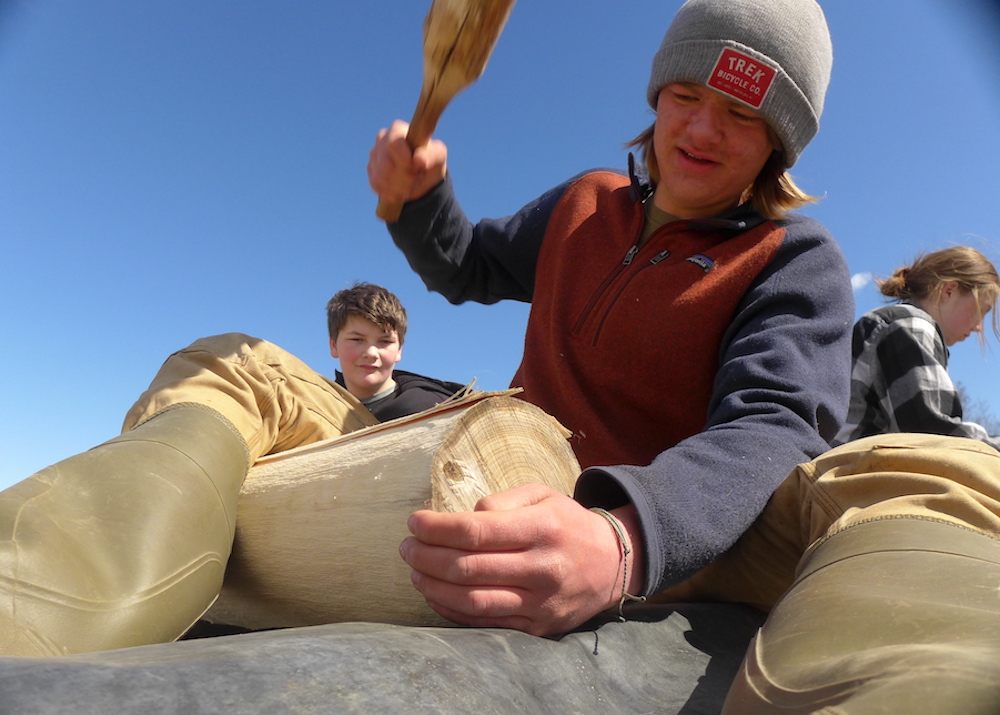 In the afternoon, we headed into the woods in three different groups all led by two or three of us semester students. I found this time interesting as I’m 16 and the ELC students were 14 or 15, so, being in a position where I was leading peers was new for me. In our groups, we found a spot to hang out and built a fire. While the fire was being built, the teacher who was with my group offered oranges to the group, which I got pretty excited about. Later, when we shared bannock with the group, one of the students looked at me and said, “no wonder you were so excited about the orange if this is what you’ve been eating!”
In the afternoon, we headed into the woods in three different groups all led by two or three of us semester students. I found this time interesting as I’m 16 and the ELC students were 14 or 15, so, being in a position where I was leading peers was new for me. In our groups, we found a spot to hang out and built a fire. While the fire was being built, the teacher who was with my group offered oranges to the group, which I got pretty excited about. Later, when we shared bannock with the group, one of the students looked at me and said, “no wonder you were so excited about the orange if this is what you’ve been eating!”
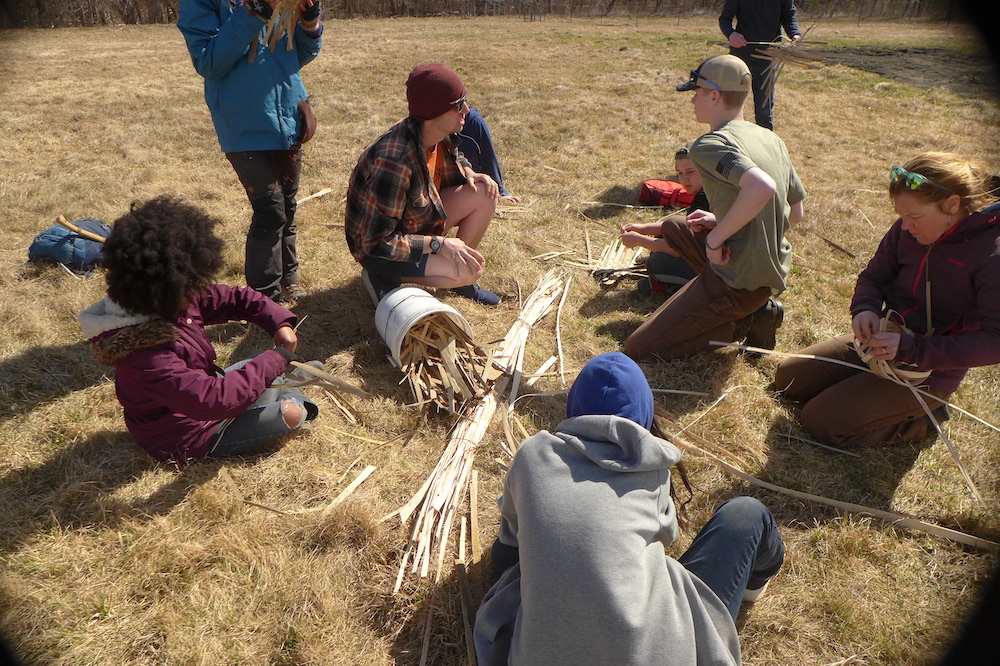 It made us laugh, as I think we’ve forgotten that fresh fruit is a pretty normal thing and bannock, to most people, is just plain mediocre bread balls. The main activity we shared with them was spoon making, which means first coal burning the bowl of the spoon and then carving the handle. Everyone had interest in making spoons, but, due to time, progress was made but not many were finished.
It made us laugh, as I think we’ve forgotten that fresh fruit is a pretty normal thing and bannock, to most people, is just plain mediocre bread balls. The main activity we shared with them was spoon making, which means first coal burning the bowl of the spoon and then carving the handle. Everyone had interest in making spoons, but, due to time, progress was made but not many were finished.
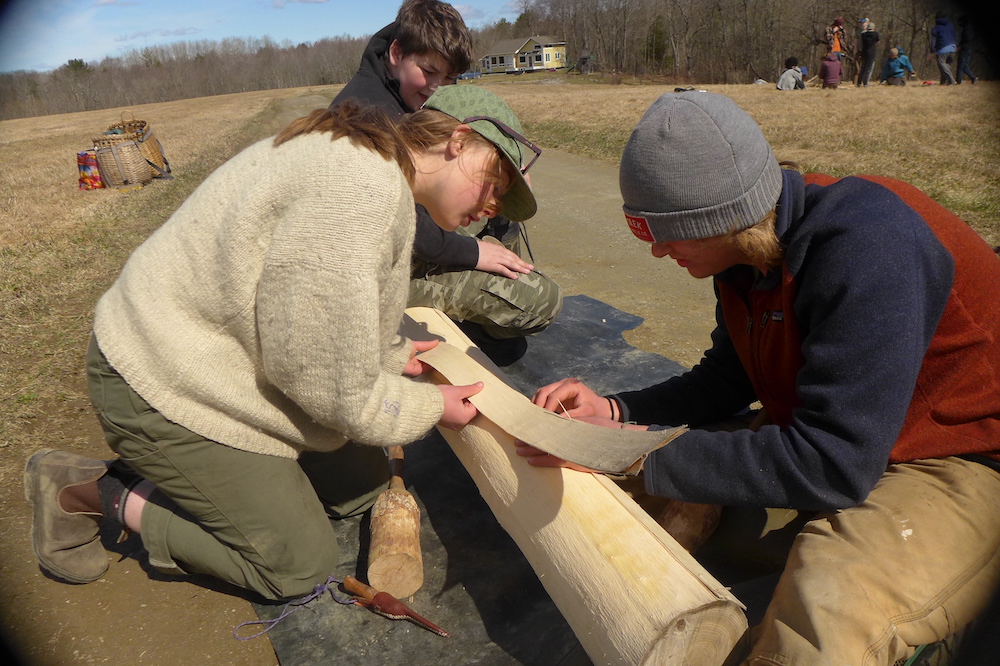 Being with high schoolers from a public school made me think a lot about my past in high school. We were similar in age yet in such different places in life, and in some ways I feel significantly older than them. It almost felt like I was watching a pre-semester version of myself. I felt this especially when thinking about technology. Many of the students had their phones on them and were using them to some degree. I’d forgotten about the inability to disconnect from technology that’s so real when you’re constantly surrounded by it.
Being with high schoolers from a public school made me think a lot about my past in high school. We were similar in age yet in such different places in life, and in some ways I feel significantly older than them. It almost felt like I was watching a pre-semester version of myself. I felt this especially when thinking about technology. Many of the students had their phones on them and were using them to some degree. I’d forgotten about the inability to disconnect from technology that’s so real when you’re constantly surrounded by it.
Academics – By Laura
For all that we do to exercise our bodies, we also exercise our minds. Academics at MLLS cover a wide range of topics from the humanities to forest science. So far, we’ve read Aldo Leopold’s essay “The Conservation Ethic”, discussing the similarities and differences between social and ecological ethics. We’ve also focused on questions like “What is activism?”, “What is our relationship to technology?”, and “Why make a wooden paddle?” through group discussion and written reflection. We also listened to a talk given by Four Arrows, an indigenous man, on the contrast between a place-based worldview and a resource-based one. It tied in well with the smattering of ecology lessons also taught: the first happenings of spring, how trees lift water, why sap runs, and cold strategies of trees (Angiosperms (typically deciduous trees) create larger veins inside the phloem to transport water and nutrients. Gymnosperms (typically coniferous trees), on the other hand, typically form many smaller veins. However, during periods when water can freeze, the larger veins in a tree can rupture from air pockets. Because of this, some trees evolved to form these smaller veins, like gymnosperms, while others, like sugar maple and birch, create a burst of positive pressure to push the air pockets out during spring. Brown ash creates a series of large spring veins that then die out at the end of the season.) All of this learning loops back to the woods we run through, harvest wood from, and collect sap from. It makes the lessons all the more powerful and applicable when we see those patterns represented in the world around us!
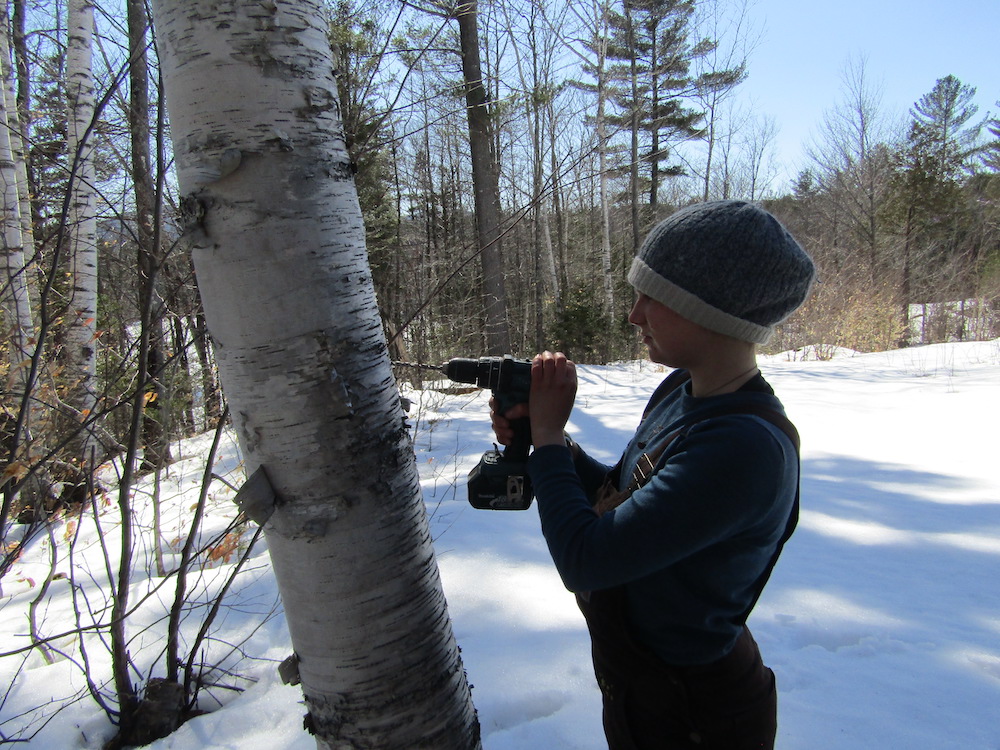 Visiting Mitchell Furniture – By Ely
Visiting Mitchell Furniture – By Ely
On April 19th, we woke up before breakfast and chores, hopped on our bicycles, and rode 8 miles of dirt road (my commuter bike complained), paved roads, and a few miles of gravel rail trail before turning onto a main road and arriving at Mitchell Furniture. There, we met with Steve, Chris’s friend and a chairmaker at the company, who showed us around the shop and the process he goes through when making furniture. Last year, I visited Boston Dynamics with my robotics team, and the amount of similarities between that massive, state-of-the-art facility and this small shop that builds chairs by hand is astounding. The people at both organizations thought about the things they made and problem solved similarly and in a way I didn’t expect. You would think that a furniture business would mostly rely on old, unchanged tradition for their processes, but instead, what we found upon entering was a complex set of jigs and other mechanisms that they had all designed themselves. Although the systems and processes Boston Dynamics uses to design and make their robots are orders of magnitude more complex than chairs, they both seemed to be dealing with the same conundrums, although for different reasons. Boston Dynamics has to create their own processes because no one else has attempted to do what they do before, and Mitchell Furniture has to create their own processes because they produce in a competitive market without the use of an expensive CNC machine. Our visit concluded with yogurt and granola and a bike ride back to MLLS.
 We look forward to updating you all again in a couple of weeks when we’ve finished our paddles, woven our packbaskets, and packed everything we need to enjoy life on the Penobscot River!
We look forward to updating you all again in a couple of weeks when we’ve finished our paddles, woven our packbaskets, and packed everything we need to enjoy life on the Penobscot River!

